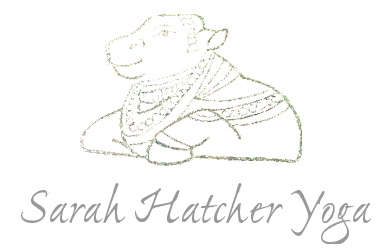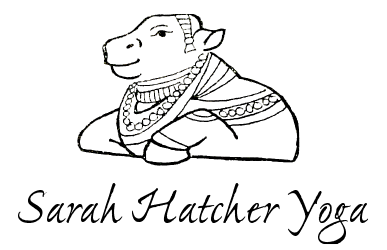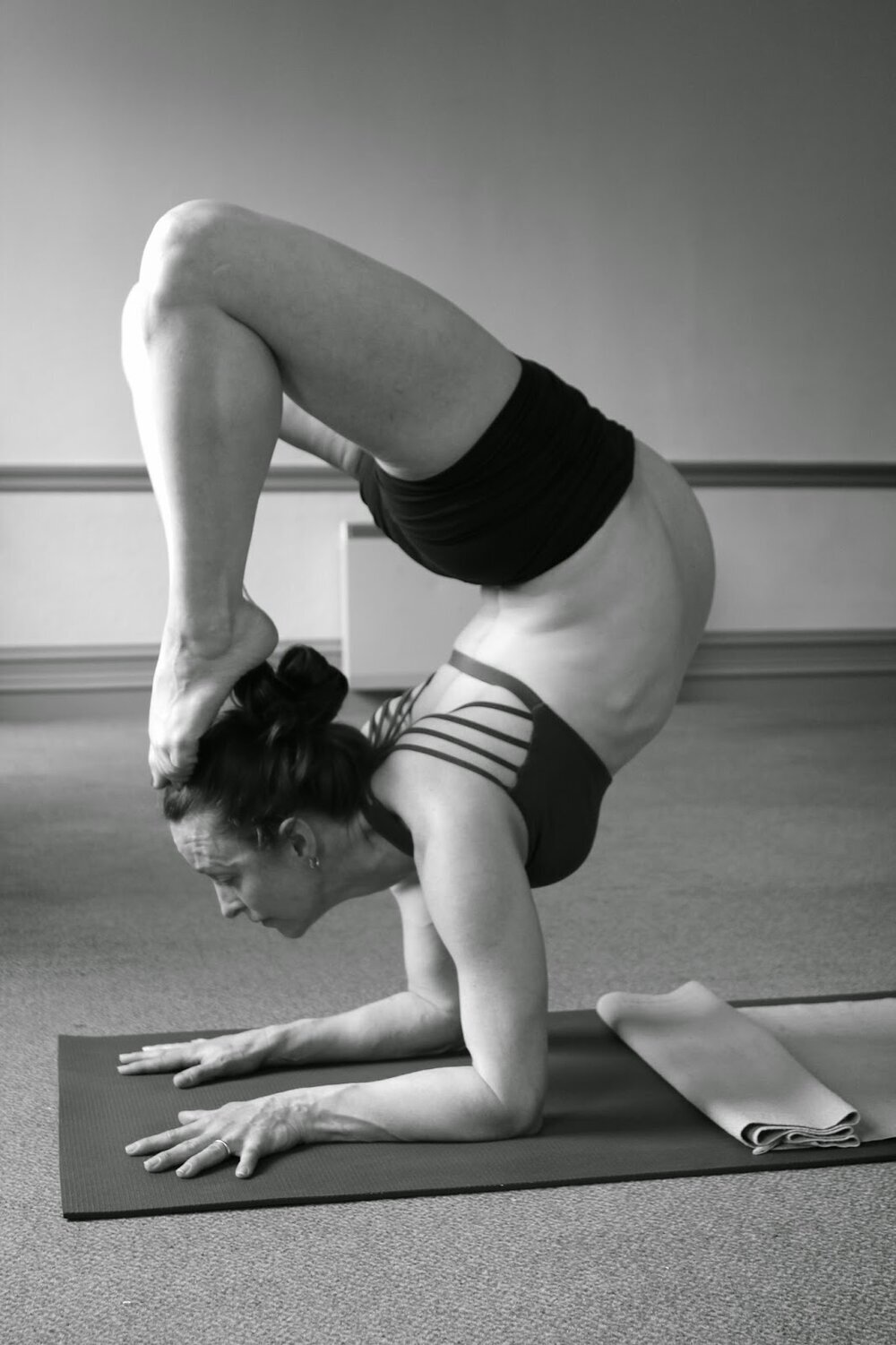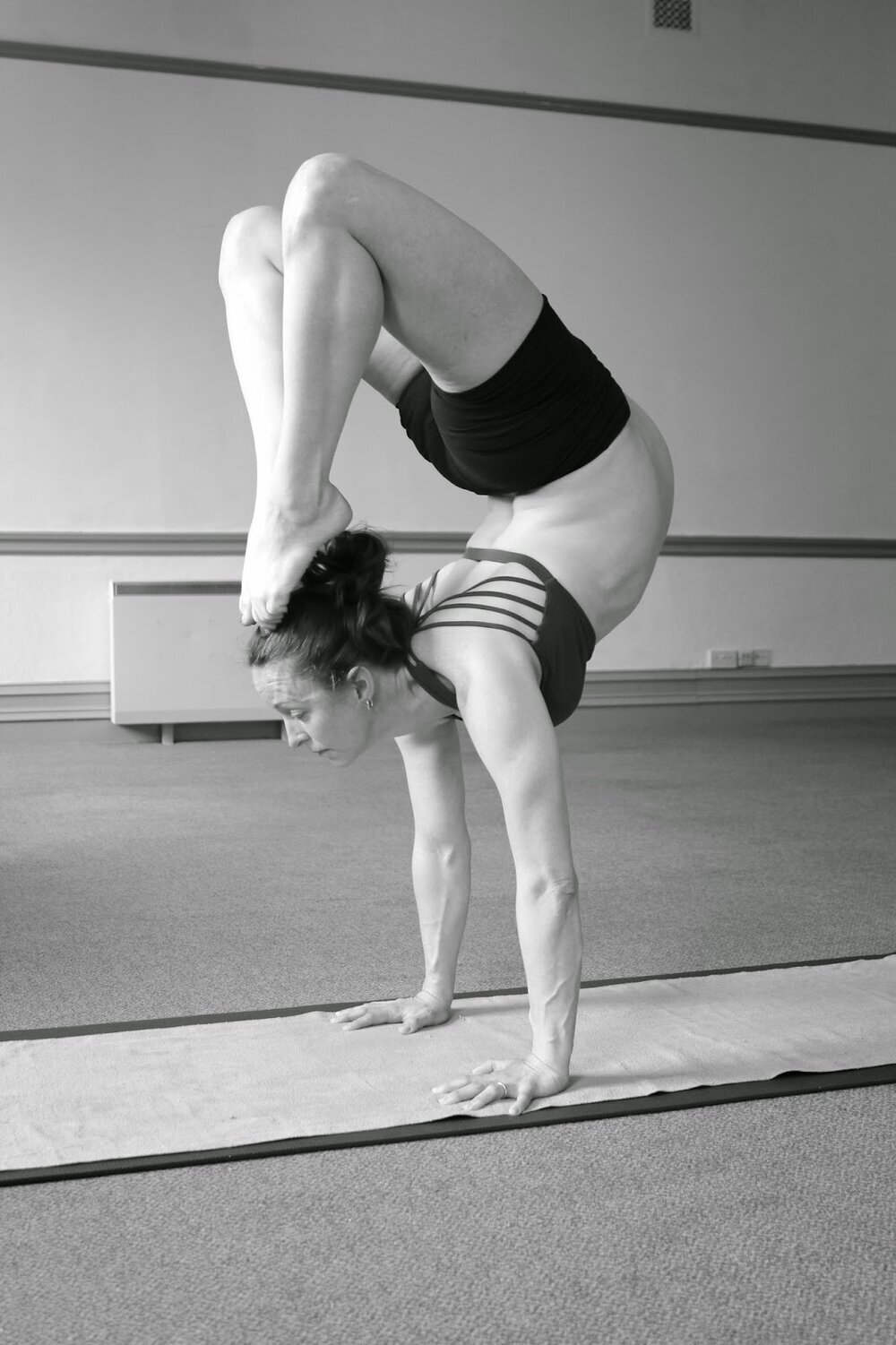Pregnancy and Ashtanga Yoga
My Pregnancy as an Ashtangi: a Story
All photos by Sarah Philp taken at 37 weeks pregnant.
Love Yoga, Aberdeen
Introduction
For a detailed guide on pregnancy and ashtanga yoga, study Betty Lai's article via ashtanga.com by clicking "Ashtanga Yoga Practice During Pregnancy".
The book, "Sadhana for Mothers" by Sharmila Desai and Anna Wise is an absolute gem of information. Consult your teacher FIRST if you are pregnant and wondering what to do with your practice. Especially if you are new to ashtanga yoga (only practicing for less than a year). There is a list of resources, books, and information at the bottom that I found most useful for birth and for ashtangis in particular.
I had been practicing ashtanga yoga daily for over ten years when I fell pregnant. My "regular practice" was not quite moderate: I was practicing advanced A and part of B four days a week and an intermediate in there one day and a primary in there once or twice. I had a heat-building, powerful yet sensitive practice and there was steam coming off my body when I did so. I observed moon days and ladies holiday, though for many years I took just the first two days off of my ladies holiday and practiced through the rest.
It took us six months to conceive; the month we conceived I had stopped teaching, was at my fullest in my practice and was eating very well. We had a conception plan from Christine Hoar, and I was chanting Sanskrit songs of abundance.
When I fell pregnant, immediately I let it all go. I practiced Matthew Sweeney's Chandra Sequence "the Moon Sequence" for the first twenty weeks - the first five months of the pregnancy because I didn't know if I could practice a traditional practice without pushing and becoming driven.
I took folic acid, a prenatal vitamin, and fish oil. I ate mostly vegetarian though I had some fish and a little beef because I felt faint. I craved seaweed, sushi, dried cherries and salty rice. I practiced the moon sequence every day as when I tried to take days off I felt nauseous. The baby loved the practice so I kept going. I taught my morning Mysore program up until 38 weeks. I taught a jump back from padmasana workshop at 20 weeks.
My Aberdeen prenatal yoga teacher, Judy Cameron, "Yoga of Birth", guided me throughout the pregnancy to "simply trust the body and follow the breath". I did just this throughout the entire pregnancy. Once the twenty weeks came, I started back at my ashtanga practice.
This blog post is my story. It isn't what everyone should do. This is what worked for me and why.
What I did:
At five months pregnant, I started back to my ashtanga practice and created a sequence of ashtanga postures from the series that worked for me. Some from primary, a few from intermediate and a few from advanced. I practiced the same routine every day taking away asanas as they became more difficult; my asana practice was no more than forty five minutes.
In general I did not:
jump back, but stepped
did not practice any bandhas - no uddiyana
did not bring the heel to navel - only a loose lotus, loose ardha baddha
never let my belly touch the floor in forward bends
no jumping from standing into the standing asanas
In the standing asanas I would hold my leg instead of grabbing my big toe, I would begin all movements with squatting, deeply squatting with legs wide (it is a natural progression that the perineum stretches while squatting and opens the pelvis 30% more - this is an obvious good thing to do in preparation for birth — "Gentle Birth Method" by Gowri Motha).
I practiced only a few seated asanas from primary: the first three; then janu sirsasana A and C; Janu A with the bent leg far away from the body - the heel far away, so that it didn't touch the pelvic floor or the belly.
Asanas from intermediate and advanced:
Fire log posture (as a prep for below) with gomakasana arms and then again with vatayanasana arms to open the chest and the ribs.
Eka pada raja kapotasana - only up to 37 weeks.
Eka pada sirasana - up to 30 weeks.
Baddha konasana (the last and final asana from primary).
Mulabandhasana through 38 weeks; this helped reduce any edema (swelling) that potentially happens in pregnancy, as I never had swollen feet or back pain.
Virasana
Ustrasana
Lagu Vajrasana
Kapotasana - up until 37 weeks.
Pincha, pincha again with lotus, pincha with scorpion - up to 38 weeks. Being upside down was a wonderful time to feel the baby move freely. I could feel my pelvis open up while upside down and automatically sense the freedom the baby had to venture into new spaces and find more real estate. This was a wonderful posture for my pregnancy.
Backbends and drop backs and tic tacs. But once the baby 'engaged' into my pelvis (head down cephalic), there were no more deep backbends as the pelvis becomes quite mobile. I did these deep backbends up until 38 weeks. Many friends I spoke to did backbends right up until their delivery so it depends on the person.
Finishing asanas:
Shoulderstand with the wall up until 39 weeks - No halasana or karnipidasana.
Matsyasana - No Uttana Padasana.
Headstand without my head on the floor as it didn't feel right; practiced right up until the day before my delivery.
Sitting and breathing - in a relaxed lotus (with support under the hips and with a pillow under the floater left knee if needed) an hour every day as I felt the baby drop instantly in this position!
Deep breathing without kumbhakas (rententions) was wonderful and finishing any deep breathing sequences with shitali breaths - a colourful and cooling way to close out to my sensitive and creative practice.
I also sang and chanted the yoga sutras of Patanjali, sang songs on my harmonium and oiled my body (abhyanga) twice a day.

Supplemental practices:
I had been advised that dancers, gymnasts and runners (this includes yogis) who were first time mothers may have significantly tighter pelvic floors due to the intensity of their activities. My prenatal teacher, Judy Cameron - advised me to invest in an EpiNo, a "pelvic floor exercise device to prepare for birth". This investment not only helped me prepare physically but mentally for the birth of our son! Then, once the birth was over, one can use the same device to strengthen the pelvic floor (at this stage NOT stretch it) so that one can become healthy again postpartum.
This device changed the way I thought of uddiyana bandha, ashwini mudra, and any pelvic floor exercise out there. I learned immensely from this medical device more about the elusive pelvic floor muscles and how to train them properly. The EpiNo also helps with incontinence and with training the pelvic floor post trauma.
***
The best way to maintain a daily yoga practice is to follow your breath and be sensitive to what your body tells you to do. I found that there weren't doubts about what to do because I listened deeply from within to what I needed. Often we aren't sure of ourselves during our yogic practices.
Once you become pregnant, there are many doubts.
So it is vital that what you are doing is not harmful to you or the baby. You must feel it and firmly believe that all you are doing is preparing yourself and your loved one for the best experience: the joy of child birth.
Consult a teacher and ask for help if you aren't sure. Above all don't practice if anything doesn't feel right. It is with this attention and care that I found ease and freedom in my practice throughout my pregnancy.
What Really Happened - the Birth:
Our son Dashiel Peter Hatcher was born naturally weighing 8 lbs at the Aberdeen Midwives Unit pool after twelve hours of labour. He was fifteen days late so the planned home birth we courageously prepared wasn't possible. I started early labour, or what is called 'latent' labour a week before he came.
I tried everything to get things further moving:
I ran up a hill
I took castor oil (did nothing but give me a terrible day on the toilet)
I chanted to the Moon
I chanted to Kali and Durga
I took evening primrose oil
I had two acupuncture treatments
I received shiatsu
I took homeopathic remedies
The only thing that worked was pressure: the night before I was to be induced my waters broke, twelve hours later Dashiel was born in the pool at the hospital. With two midwives and my husband Tim the baby came out bright eyed and gorgeous.
I had to leave the pool to deliver the placenta, and this was where things became difficult. I was shocked at how much blood was lost! I had to deliver the placenta on the bed which was fine at the time since I was exhausted but in reflection I should have been squatting or standing or on all fours. I tore the front passage badly and needed nine stitches; this put quite a damper on my natural birth high.
Post Birth
Everyone, I learn, seems to have something about pregnancy or childbirth or post childbirth that is/was challenging. My pregnancy and birth were beautiful; afterwards though, learning how to breast feed and care for my son was a whole package deal that was absolutely trying in every way. I didn't have milk in the beginning so I had to express by pumping, seek help from the hospital and Dashiel and I both had to learn to stop, sit on the sofa or on the bed and do nothing but feed. And feed more.
We cracked our breast feeding troubles about six weeks. It took us a long time to get it right. During this time I cried every day. I had my placenta encapsulated so I was taking these pills to prevent postpartum depression. I believe they worked but since I cried so much during the fourth trimester, I wonder, what would I have been like if I hadn't taken them?
I tried practicing at four weeks, just to get moving. Nothing felt right so I stopped. I waited till eight weeks to do some standing asanas, still it was terribly uncomfortable on my stomach for upward dog. Slowly slowly around three months is when I could do parts of primary and some days I would do ten Namaskaras and then feed the baby; and a half an hour later do ten more.
From this place of building the namaskars back through repetition and elementary alignment, I am slowly building my strength back. There is no rush. Some days I get on my mat and do some standing and then breathe in padmasana and chant.
Having this blessed ashtanga yoga practice gave me the tools to be confident in myself and in the birth; the wisdom to unravel when I needed to instead of holding my pains inside. I am forever grateful that I practiced through the pregnancy as I was pain free the entire time. And above all, sitting in padmasana kept my spine erect and strong, and my mind clear. If there is anything all the years of practice taught me that prepared me for the challenge of becoming a mother, it was the lesson of letting go. Allowing myself to be ok with whatever comes and having the ability to invite it in, whatever emotion it was, without fear.
Thank you Guruji, for teaching me and all my teachers before me. We all love and miss you.
Motherhood

Dashiel Peter, 14 weeks
Being a mother to my son Dashiel Peter has been the highlight of my life. Sharing the beauty of yourself and the world with a small child is the pinnacle of being a woman. My husband is a giant part of this as well, and I am blessed and grateful for his endless love, patience and understanding.
How blessed we are in this world!
Hari Om, Sarah

On holiday in Applecross, 12 weeks old
Resources:
Sharmila Desai and Anna Wise "Yoga Sadhana for Mothers" A Must!
Gowri Motha, "The Gentle Birth Method". Website
Marie Mongan Method, "The Hypnobirthing Institute" Website
Epi No — Pelvic Floor Training Device
*****
Birth Mentors in the Aberdeen area and beyond I highly recommend:
Christine Hoar, Authorized Ashtanga Teacher and Ayurvedic Consultant. Conception Birth Plan; Diet and Breast feeding Guidance. "Ashtanga Montauk", New York.
Amber Sebold, "Gentler Beginnings" our Doula
Kylie Elliot, "Positive Birth Choices" Placenta Encapsulation
Sue Townsend, Registered Homeopath website
Judy Cameron, "Yoga of Birth" midwife and prenatal yoga teacher
Dr Fan Zhou, Aberdeen Acupuncture website
Martin Julich, Rosemount Centre for Holistic therapies Shiatsu





